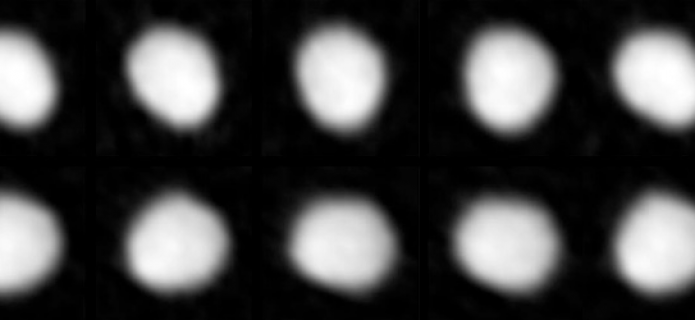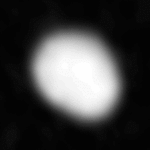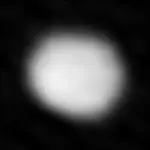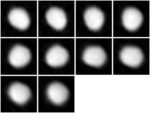Asteroid Juno Seen Traveling Through Space in New ALMA Images and Animation
7 April, 2015 / Read time: 4 minutes
A series of images made with the Atacama Large Millimeter/submillimeter Array (ALMA) provides an unprecedented view of the surface of Juno, one of the largest members of our solar system's main asteroid belt. Linked together into a brief animation, these high-resolution images show the asteroid rotating through space as it shines in millimeter-wavelength light.
"In contrast to optical telescopes, which capture the reflected light from the Sun, the new ALMA images show the actual millimeter-wavelength light emitted by the asteroid," said Todd Hunter, an astronomer with the National Radio Astronomy Observatory (NRAO) in Charlottesville, Va. A paper prepared by representatives of the entire international ALMA consortium detailing these observations was accepted for publication in the Astrophysical Journal, Letters.
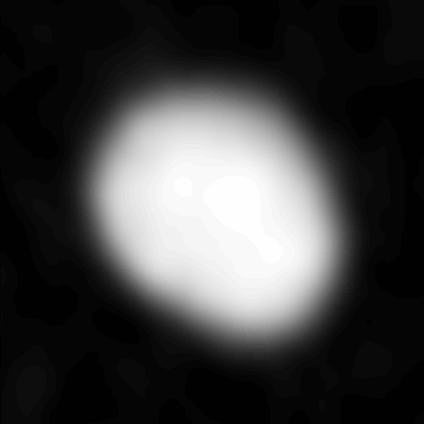
Animation of the asteroid Juno as imaged by ALMA as part of the telescope's Long Baseline Campaign. Images were taken when Juno was approximately 295 million kilometers from Earth. Credit: ALMA (NRAO/ESO/NAOJ)
According to Hunter: "By using ALMA to image the thermal glow from asteroids like Juno and other bodies in our solar system, astronomers will be able to study their shape, composition, and surface properties."
The complete ALMA observation, which includes 10 separate images, documents about 60 percent of one rotation of the asteroid. It was conducted over the course of four hours on 19 October 2014 when Juno was approximately 295 million kilometers from Earth. In these images, the asteroid's axis of rotation is tilted away from the Earth, revealing its southern hemisphere most prominently.
For this observation, ALMA achieved a resolution of 40 milliarcseconds, meaning that each "pixel" in the images is about 60 kilometers across, covering approximately one fourth of the surface of Juno. This resolution is a vast improvement over earlier observations made at similar wavelengths and is enough to clearly resolve the shape of the asteroid and potentially tease out prominent surface features.
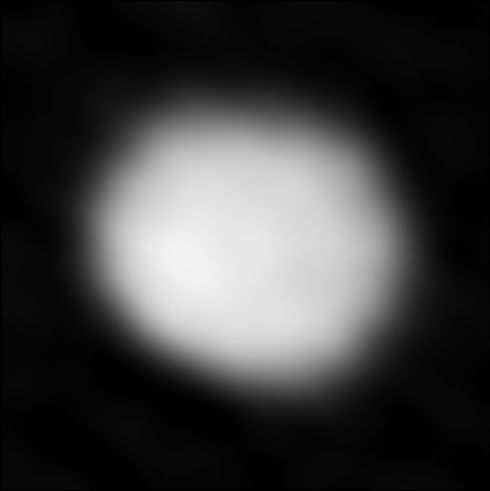
Juno, one of the largest members of the main asteroid belt, as seen with ALMA. Credit: ALMA (NRAO/ESO/NAOJ)
Juno will make its next close approach to Earth in November 2018. Since the asteroid will be much closer than it was in the most recent observations, ALMA will be able to double its resolution, potentially revealing new details about this intriguing object. At approximately 240 kilometers across, Juno is among the largest members of the solar system's main asteroid belt, but it is still only a few percent the mass of this region's largest inhabitant: the dwarf planet Ceres, which is now playing host to NASA's Dawn spacecraft.
"This new observation clearly demonstrates that ALMA will be a very powerful tool for studying asteroids," said NRAO astronomer Arielle Moullet. "At its highest resolution, ALMA is powerful enough to resolve the surface of many asteroids." Earlier models of Juno developed by studying its reflected light indicate that it has an oblong, or potato-like, shape with possibly minor indentations on its surface. The ALMA images seem to support this model.
Juno is one of five targets selected for study during the ALMA Long Baseline Campaign to test the telescope's high-resolution capabilities, achieved when the antennas are at their greatest separation: up to 15 kilometers apart. The other targets include the protoplanetary disk HL Tau, the gravitationally lensed galaxy SDP.81, the star Mira, and quasar 3C138.
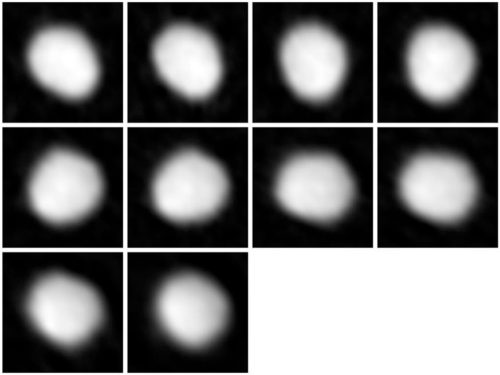
Series of images of the asteroid Juno taken with ALMA as part of the telescope's Long Baseline Campaign. Credit: ALMA (NRAO/ESO/NAOJ)
More information
The paper, "ALMA Observations of Asteroid 3 Juno at 60 Kilometer Resolution", is located here: https://arxiv.org/abs/1503.02650.pdf
The Atacama Large Millimeter/submillimeter Array (ALMA), an international astronomy facility, is a partnership of the European Organisation for Astronomical Research in the Southern Hemisphere (ESO), the U.S. National Science Foundation (NSF) and the National Institutes of Natural Sciences (NINS) of Japan in cooperation with the Republic of Chile. ALMA is funded by ESO on behalf of its Member States, by NSF in cooperation with the National Research Council of Canada (NRC) and the Ministry of Science and Technology (MOST) in Taiwan and by NINS in cooperation with the Academia Sinica (AS) in Taiwan and the Korea Astronomy and Space Science Institute (KASI).
ALMA construction and operations are led by ESO on behalf of its Member States; by the National Radio Astronomy Observatory (NRAO), managed by Associated Universities, Inc. (AUI), on behalf of North America; and by the National Astronomical Observatory of Japan (NAOJ) on behalf of East Asia. The Joint ALMA Observatory (JAO) provides the unified leadership and management of the construction, commissioning and operation of ALMA.
Contacts
-
Valeria Foncea
Education and Public Outreach Manager
Joint ALMA Observatory Santiago - Chile
Phone: +56 2 2467 6258
Cel: +56 9 7587 1963
Email: [email protected]
-
Masaaki Hiramatsu
Education and Public Outreach Officer, NAOJ Chile
Observatory, Tokyo - Japan
Phone: +81 422 34 3630
Email: [email protected]
-
Bárbara Ferreira
-
Amy C. Oliver
Public Information & News Manager
National Radio Astronomical Observatory (NRAO), USA
Phone: +1 434 242 9584
Email: [email protected]
